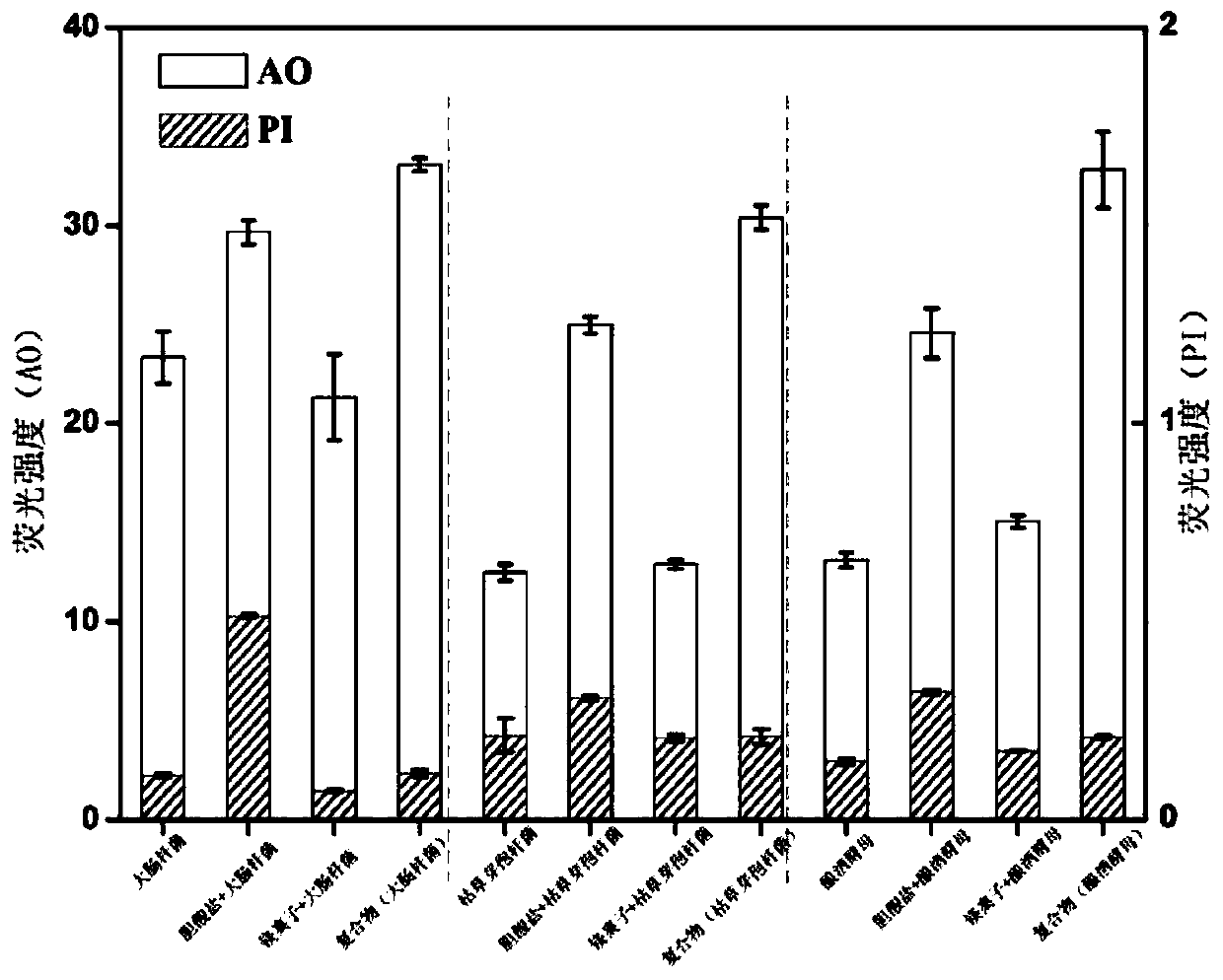Method for cholate-metal ion composite modified whole cell and application of cholate-metal ion composite modified whole cell
A technology of metal ions and whole cells, applied in the direction of microorganism-based methods, biochemical equipment and methods, immobilized on or in inorganic carriers, can solve the problems of microorganisms reducing mass transfer efficiency and large size of microspheres, and achieve Effects of overcoming damage and death, fast material conversion, and overcoming mass transfer resistance
- Summary
- Abstract
- Description
- Claims
- Application Information
AI Technical Summary
Problems solved by technology
Method used
Image
Examples
Embodiment 1
[0031] The cultivation and gene expression of embodiment 1 bacterial strain
[0032] Escherichia coli E. coli BL21(DE3) belongs to conventional bacteria and was purchased from Beijing Biolab Technology Co., Ltd.
[0033] Escherichia coli E. coli Trans1-T1 for transformational replication of plasmid, Escherichia coli E. coli BL21(DE3) was used for gene expression and strain fermentation, and the plasmid pET28a was purchased from Quanshijin Company. The cytochrome P450 monooxygenase was donated by Professor Liu Luo of Beijing University of Chemical Technology. After the whole gene sequence was synthesized by Nanjing Qinke Company, PCR primers were designed, amplified by PCR, and recovered by agarose gel electrophoresis. Nco I and Hind Cut the vector pET28a and P450 gene sequence with III cutting enzyme, connect with T4 DNA ligase, obtain the recombinant plasmid pET28a-P450, and transform it into Escherichia coli E. coli Trans1-T1 Competent is used to preserve the rec...
Embodiment 2
[0044] Example 2 Preparation of cholate-metal ion immobilized cell complex
[0045] Prepare the collected bacteria with Tris-Hcl (pH 7.2, 0.05mmol / L) buffer to make 1~10 OD 600 concentration of solution A.
[0046] Prepare deoxycholate into solution B with a concentration of 100-300mmol / L.
[0047] Prepare magnesium chloride into solution C with a concentration of 200-800mmol / L.
[0048] Mix solution A and solution C, add solution B, stir at room temperature for 15~60min, and wash twice with Tris-Hcl (pH 7.2, 0.05mmol / L) buffer solution to obtain cholate-metal ion complex-modified whole cells.
[0049] The thalline here is any one in embodiment 1.
[0050] Among them, the Escherichia coli modified with cholate-metal ion complex is recorded as complex (E. coli); see figure 1 ;
[0051] The Bacillus subtilis modified by the cholate-metal ion complex is denoted as complex (Bacillus subtilis);
[0052] Saccharomyces cerevisiae modified with the cholate-metal ion complex is ...
Embodiment 3
[0053] Example 3 Universal binding mechanism of cholate-metal ion complexes to different cells
[0054] With the escherichia coli in embodiment 1 E. coli BL21(DE3) is the immobilized target bacterium, and the Escherichia coli modified by the cholate-metal ion complex is prepared by Example 2 E. coli BL21(DE3), see figure 1 .
[0055] Use ethanol solutions with volume fractions of 30%, 50%, 80%, 90%, and 100% to wash the bacterial strains modified by the cholate-metal ion complex step by step, wash away excess materials, and obtain a single cholate - Whole cells modified with metal ion complexes ( figure 2 (a), the strain is Escherichia coli; figure 2 (b) the strain is Bacillus subtilis; figure 2 (c) The strain is Saccharomyces cerevisiae). The complex is still combined with the cell membrane after multiple washings, indicating that the material is stable after being embedded in the cell membrane, and there is a good combination between the complex and the cell mem...
PUM
 Login to View More
Login to View More Abstract
Description
Claims
Application Information
 Login to View More
Login to View More - R&D
- Intellectual Property
- Life Sciences
- Materials
- Tech Scout
- Unparalleled Data Quality
- Higher Quality Content
- 60% Fewer Hallucinations
Browse by: Latest US Patents, China's latest patents, Technical Efficacy Thesaurus, Application Domain, Technology Topic, Popular Technical Reports.
© 2025 PatSnap. All rights reserved.Legal|Privacy policy|Modern Slavery Act Transparency Statement|Sitemap|About US| Contact US: help@patsnap.com



